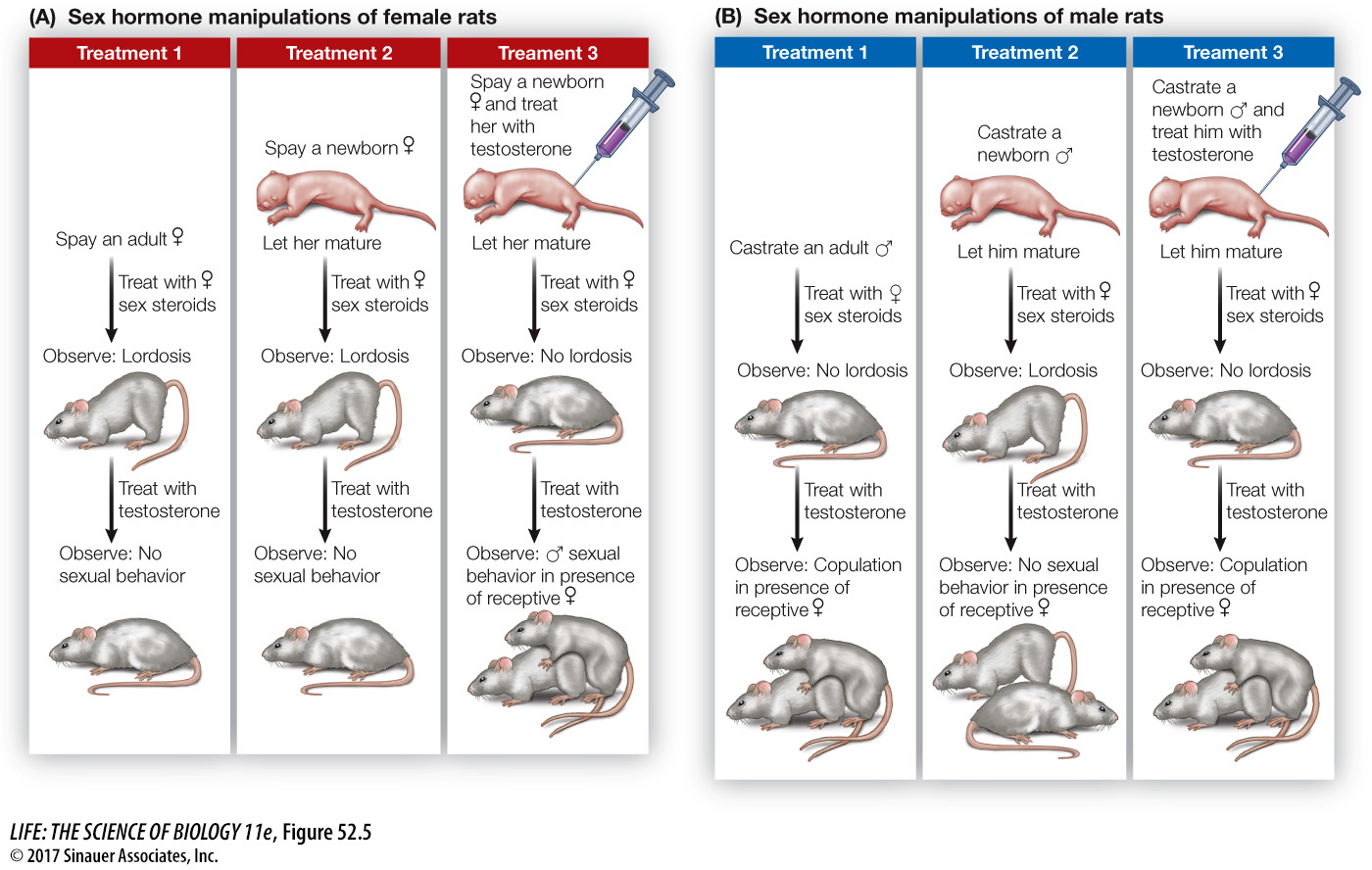Hormones can determine behavioral potential and timing
Hormones can determine the development of a behavioral potential at an early age and the expression of that behavior at a later age. An excellent example of this is sexual behavior in rats (Figure 52.5). Normally, adult male and female rats exhibit different patterns of sexual behavior: females adopt a sexually receptive posture, called lordosis, in the presence of males, and males copulate with receptive females. Neither sex, however, expresses these behaviors until the animals have reached adulthood. Experiments in which newborn and adult rats were neutered (to remove the influence of sex steroids naturally produced by their gonads) and artificially treated with hormones led to the following conclusions:
Development of male sexual behavior requires the brain of the newborn rat be exposed to testosterone. Female sexual behavior development does not require exposure to estrogen.
Testosterone masculinizes the nervous systems of both genetic males and genetic females.
Exposure to sex steroids in adulthood is necessary for the expression of sexual behavior, but testosterone produces male sexual behavior only in adult rats whose brains were masculinized when they were newborns, and estrogen produces female sexual behavior only in adult rats whose brains were not masculinized when they were newborns.

1122
Thus the sex steroids that are present at birth determine which pattern of behavior develops, and the sex steroids that are present in adulthood determine when that pattern is expressed.